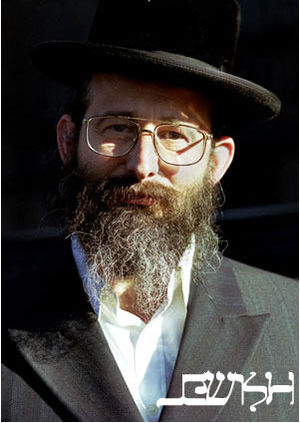You Can Trace Your Jewish Heritage, Part 2
 29
29Mar
Part one of this series discussed how to begin researching your Jewish ancestors and began looking at American record collections. Part two digs a little deeper into the various ways to locate them. Let’s start by expanding on the naming patterns and then add some other concepts that are helpful to know.
First, many Jewish immigrants used American versions of their name. Sometimes an ancestor spelled their given name several different ways. For example, Chaim, Chayim, and Hyam may all refer to the same man. Batya, Batia and Basya could all be the same woman.[1] Think outside the box with your search parameters, but be careful that other factors on the record match your ancestor, such as the location.

Second, consider the Old Testament where a man called Hosea in one record could be called Joshua in another.[2] This has to do with the fact that Jews often had Jewish names relating to their religion, as well as everyday names they used in their public and professional lives. In some instances, the Anglicized name was a variation of the Hebrew one.
Third, unique records are available for Jewish genealogy. For example, the first ceremony for children is held within just a few days of the baby's birth. For Jewish boys it is the circumcision or brit milah (bris). In contemporary society, a family may have a brit bat (naming or covenant ceremony) for their baby girl. Records of such events may include invitations by the family to guests, synagogue programs, newsletters, documents of the Rabbi overseeing the ceremony, and the mohel’s (the doctor performing the circumcision) record of the event.[3]
Another helpful record that can extend an ancestral line are gravestones. Jewish gravestones with Hebrew inscriptions not only show the date of death, but may also show the age, date of birth, and the name of the father.[4] JewishGen is a fabulous site that teaches you the keywords needed to read a Jewish gravestone. Aids are given to translate the Jewish calendar and other common Hebrew phrases.
RECORD COLLECTIONS
There are many sources of records on Jewish genealogy, some better known than others. An example is the Ackman & Ziff Family Genealogy Institute, which has made several collections searchable online, including:
The Baron de Hirsch Fund Records (collection #I-80) Admission books for the Baron de Hirsch Trade School from 1897-1928 are found here.
Brooklyn Hebrew Orphan Asylum (Ref. # I-230) This collection includes admission and discharge ledgers, along with other documents related to the Brooklyn Hebrew Orphan Asylum (founded in 1878) and its successor organizations.
Henry Hochheimer Marriage Record Book 1850-1900 Many marriages from 1850 to 1900 can be found from various congregations and synagogues in the Baltimore area, as well as other states along the eastern seaboard.
Industrial Removal Office. Records, n.d. 1899-1922 The Industrial Removal Office and its parent organization, the Jewish Agricultural Society, worked to assimilate immigrants, and helped them find jobs. Among other documents are removal records of immigrants.
Before we move to the record collections in other countries, paleography (deciphering the old writing and numbers) should be addressed. Records are often written in different languages. In Jewish genealogy, the Hebrew language is very common, although some records are in the Yiddish, German, Russian, and Italian, to name a few. The National Archives offers a free tutorial that can help you get started. However, a shortcut does exist to help in translating Jewish records—Stevenmorse. This site can translate words and phrases in a variety of languages. In addition, the Hebrew Alphabet, written by Zachary M. Baker, is also offered as a pdf by the Routes to Roots Foundation.
RECORDS OUTSIDE THE UNITED STATES
Once you have identified a country or region of origin, you can often find records in the local state archives. An inquiry sometimes costs between $200 and $700, but the information received will likely be very valuable.
A free source for European records is the Family History Library in Salt Lake City, much of whose holdings can be viewed digitally from your local Family History Center or at home. They have substantial collections of Jewish vital records and are working to acquire more. Some of the collections are available online, through the Family Search Catalog. A few of the countries included in these collections are: Austria, Africa, Afghanistan, Argentina, Canada, Czech Republic, England, France, and Germany, etc.
The Routes to Roots Foundation holds a plethora of Eastern European records in their archives. A few of the countries included in their collection are Poland, Ukraine, Belarus, Lithuania, and Moldova, etc.
The United States Holocaust Memorial Museum has over 280,000 records available. The Museum’s collections document Holocaust victims, survivors, rescuers, liberators, and others through artifacts, documents, photos, films, books, personal stories, and more.[5]
Another resource that may be helpful are Jewish genealogical societies. Genealogical societies allow you to network with others searching in the same areas or the same surnames. They also offer publications and newsletters that can alert you to available new record collections. Many have resources and record collections available to search. Some societies charge a fee for use of their records, but it is generally minimal. Specific to Jewish genealogy, The International Association of Jewish Genealogical Societies (IAJGS) is an independent non-profit umbrella organization coordinating the activities and annual conferences of more than seventy national and local Jewish genealogical societies around the world.[6]
As you can now see, there are thousands of records available to search for your Jewish ancestors, both in the United States and elsewhere. The process does often require advanced skills such as interpreting records written in Hebrew or other languages. When using the right sources and methods, success researching your Jewish lines is as likely as success with any other ancestral areas. Remember, talk to your family members, discover your family in the American records. Once you have identified the country of origin, move across the sea to the record collections available there. Price Genealogy can assist you with any of these steps. You may be surprised at how much information is available.
Billie and Michael
[1] “Jewish Girl’s Names,” Aish (http://www.aish.com/jl/l/b/48967016.html : accessed 6 February 2019).
[2] “Biblical Hebrew Names,” Behindthename (https://www.behindthename.com/names/usage/biblical-hebrew : accessed 3 February 2019).
[3] Jennifer M. Alford, “Unique Records for Jewish Genealogy,” Archives (https://www.archives.com/experts/alford-jennifer/unique-records-for-jewish-genealogy.html : accessed 3 February, 2019) .
[4] “Reading Hebrew Tombstones” Jewishgen (https://www.jewishgen.org/infofiles/tombstones.html : accessed 3 February 2019).
[5] “Search Our Collections,” United States Holocaust Memorial Museum (https://collections.ushmm.org/search/ : accessed 5 February 2019).
[6] “Member Societies,” International Association of Jewish Genealogical Societies (IAJGS) (http://www.iajgs.org/blog/membership/member-societies/ : accessed 6 February 2019).
